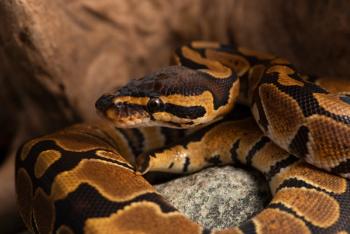
Hyperthyroidism in cats linked to PBDE exposure
Investigators recently reported in Environmental Science & Technology that cats with hyperthyroidism had significantly higher serum levels of polybrominated diphenyl ethers (PBDEs) than did euthyroid cats.
Cats with hyperthyroidism had significantly higher serum levels of polybrominated diphenyl ethers (PBDEs) than did euthyroid cats, investigators
The finding confirms an older
Polybrominated diphenyl ethers were used as flame retardants in a variety of products and building materials from the 1970s through the early 2000s. However, the United States banned penta-brominated diphenyl ether in 2004 and voluntarily phased out deca-BDE in 2013 after human and animal studies linked PBDEs to serious health concerns, including low birth weight, neurodevelopmental problems, infertility, and cancer. Cats tested between 2008 and 2010 had “extremely high” serum PBDE levels in a previous study by the same authors, they wrote. They compared serum PBDE levels in 11 hyperthyroid cats and 11 euthyroid cats to assess the effects of the ban and phase-out and to explore the potential role of PBDEs in feline hyperthyroidism. All 22 cats were at least 10 years old, and most were kept indoors and ate both canned and dry food.
Median PBDE levels for the entire group dropped more than two-fold between 2008-2010 and 2012-2013 (P = 0.006). “In contrast, PCB and OCP levels showed no statistically significant changes” over time, suggesting that the decrease was related to the ban and phase-out of PBDEs, the authors said. Importantly, serum PBDE levels were significantly higher among hyperthyroid cats (mean,3906 ng per g lipid; standard deviation, 1442) than among euthyroid cats (1125 ± 244; P = 0.0003), even after controlling for age and considering only the most relevant (later) time period.
Researchers do not yet understand the causes of feline hyperthyroidism, but think that the disease is probably multifactorial, and may result from nutritional imbalances or exposure to thyroid-disrupting compounds in canned food, drinking water, or house dust, the authors noted. Notably, the hyperthyroid cats in their study tended to eat less canned food than did non-hyperthyroid cats, which directly contradicts previous reports, and requires further investigation, they said. They also did not detect any links between canned food consumption and serum levels of PBDE, PCB, or OCB, they added.
The study was partially funded by the California Department of Toxic Substances Control. The authors had no competing interests.
Dr. Amy Karon earned her doctorate in veterinary medicine and master’s degrees in public health and journalism from the University of Wisconsin-Madison. She was an infectious disease epidemiologist and “disease detective” (EIS officer) with the Centers for Disease Control and Prevention before becoming a full-time medical writer. She lives in the San Francisco Bay area, where she volunteers for the local Humane Society.
Newsletter
From exam room tips to practice management insights, get trusted veterinary news delivered straight to your inbox—subscribe to dvm360.






